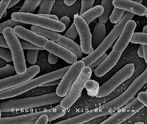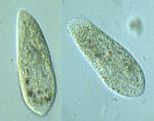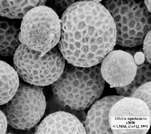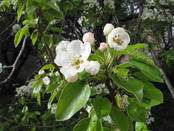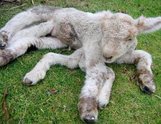Archaea & Bacteria
Organisms in Archaea and Bacteria Kingdoms reproduce via binary fission. Binary fission is a form of asexual reproduction where a single parent cell produces two daughter cells identical to the parent. Binary fission involves the replication of DNA which separate into opposite sides of the cell, elongating it, and then eventually splitting the cell in half.
Reproduction in the Protista Kingdom can vary sexually and asexually. Some, such as the single-celled amoeba, reproduce asexually, via mitosis (replication and division of nucleus). Other types of asexual reproduction in protista include spore formation (repeated divisions, or clones, of a zygote made by a haploid parent) and budding (an identical daughter cell which breaks off the parent cell). Protista can also reproduce sexually by a process called conjugation. Basically two individuals exchange genetic material using a second nucleus, these two protista then divide to produce 4 protists with a combination of the shared genetic material.
Like in Protista, Fungi can also reproduce both sexually and asexually. Fungi can reproduce asexually via spores encased in hyphae, which then break open and the spores are released into the air. These spores are created via mitosis and can grow into a multicellular organism idential to the parent. Fungi reproduce sexually when two haploid nuclei from different parent organisms fuse together into a single diploid nucleus which then undergoes meiosis (combination of genetic information) to produce 4 haploid nuclei that develop into spores which are the released into the air.
Plants can also reproduce sexually and asexually. Plants can asexually reproduce via budding, fragmentation, rhizomes or stolons. Rhizomes are the main stems of a plant which can be cut into piece and can give rise to a new plant (e.g ginger). Stolons (or runners) are similar to rhizomes but branch out from the main stem and forms new shoots at the ends such as in strawberry plants. Sexual reproduction in plants occurs via pollination where the pollen from the anther (male sex organ) comes in contact with the stigma (female sex organ). This can be achieved through various means such as insects, the wind, water, birds etc. The nuclei of the pollen grain then moves down the stigma into the ovary. The fertilized overy then develops into a seed.
Most animals reproduce sexually when half of the DNA from each of the two individual parents, in the form of a gamete, are combined to form a new diploid organism (zygote). A gamete is formed via meiosis, a male gamete is called a sperm and the female gamete, the egg or ova. Some animals can reproduce asexually such as the starfish which can form identical copies of itself via fragmentation. Some aphids can reproduce asexually depending on the time of the year. During summer live young females are born identical to their mothers due them deriving all their genetic information from their single parent in a modified version of meiosis called parthenogenesis.
